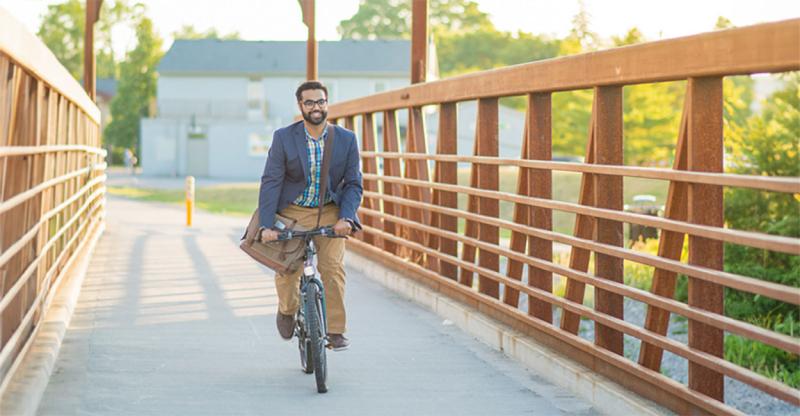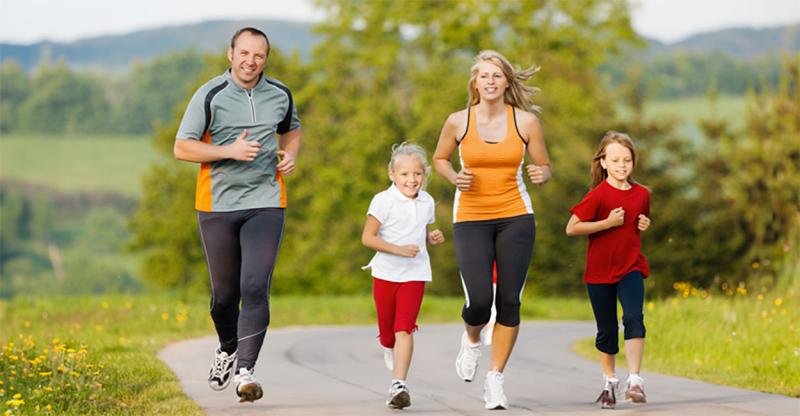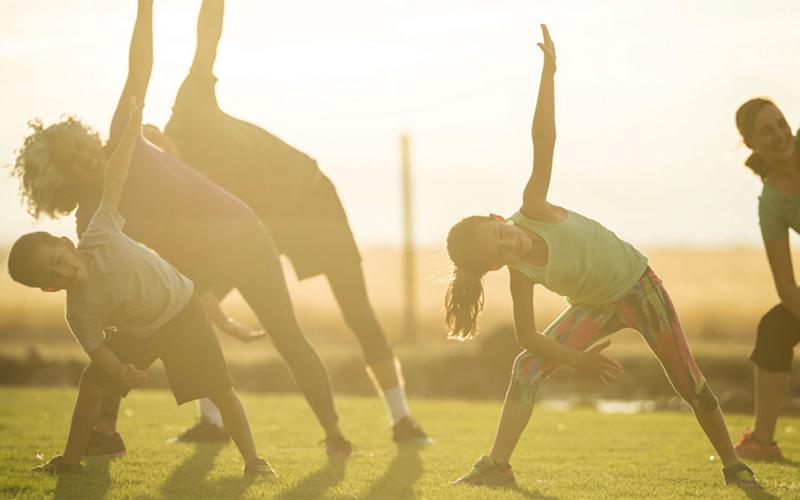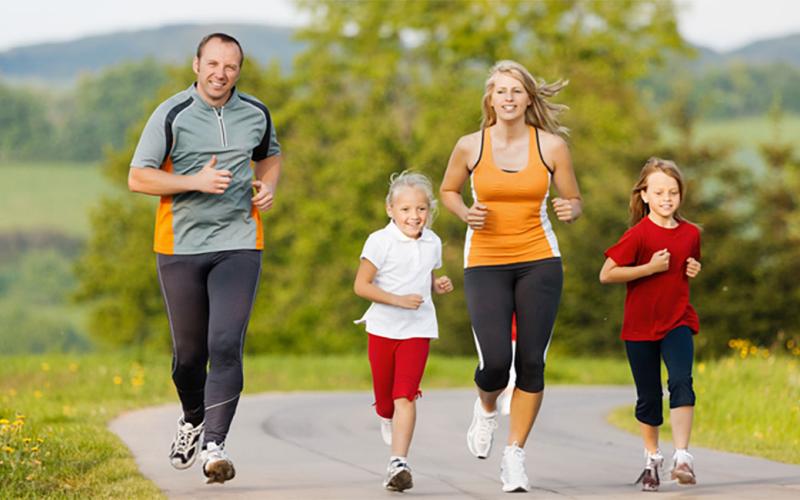
Written by Emily Kranz, former SDSU Extension Health and Physical Activity Field Specialist
As the world continues to evolve from physically demanding occupations to more seated work environments, there are many dangers associated with an increasingly sedentary lifestyle. Think about your own daily routine and how many opportunities for regular sitting there are (commuting, eating meals, seated occupations, consuming media, attending sporting events or other activities) all of which likely contribute to the bulk of your day.
Even if you are meeting weekly physical activity recommendations, you may still have long periods of sedentary time throughout your day and could be considered an “active couch potato.”
Importance of Physical Activity
Risks of Inactivity
Regular inactivity and a sedentary lifestyle lead to a number of increased health risks and have an annual healthcare cost of around $117 billion dollars. These health risks include:
- Increased risk of all-cause mortality.
- Inactivity contributes to 1 in 10 premature deaths.
- Increased risk of metabolic disorders, including high blood pressure (hypertension), diabetes, and high cholesterol (dyslipidemia).
- Increased body weight and poor body composition.
- Increased cardiovascular disease risk.
- Increased cancer risk.
- Increased risk of depression.
- Cognitive impairment.
- Increased risk of osteoporosis.
- Elevated chronic inflammation.
Benefits of Physical Activity
Although there are many health risks associated with excess sitting, the good news is physical activity has numerous benefits and can counteract many of the risks. These benefits include, but are not limited to, the following:
- Reduced risk of cardiovascular and metabolic diseases.
- Improved weight loss or weight maintenance.
- Improved bone health.
- Improved cognition.
- Improved sleep quality.
- Reduced risk of depression.
- Overall improved quality of life.
Strategies to Move More

There are many opportunities to incorporate physical activity into one’s regular routine. According to the 2018 Physical Activity Guidelines for Americans, adults should aim for at least 150 minutes of moderate-intensity physical activity per week. This activity can be broken up into small chunks throughout your day, sometimes referred to as “exercise snacks.” Only have a minute or two in between tasks? This is a great time to incorporate a few minutes of activity versus continuing to stay seated and sedentary. Take a lap around the office, grab a resistance band, try some calf raises or jumping jacks—the possibilities are endless. See the following suggestions for various settings below. Remember, even small actions can have a large cumulative impact over one’s lifespan.
Strategies for Anytime, Anywhere
- Park farther away from the entrance.
- Take the stairs versus the elevator.
- Walk laps or do exercise snacks while warming up food in the microwave, fueling up your car, or other similar tasks.
- Wear comfortable clothing and supportive shoes to encourage movement throughout the day.
- Invest in a wearable device to promote physical activity each hour.
- Active transport around town by walking or biking instead of driving if there are safe trails and sidewalks.
- Stand during sporting events or other activities.
- Get the whole family involved and find activities you all enjoy doing together, like dancing, exploring a state park, trying a new sport, or regular walks around the neighborhood.
- Walk laps around the field or court while at a child’s practice.
Workplace Strategies
- Set-up calendar alerts to get-up and move hourly.
- Walk and talk breaks. Regularly schedule walks with co-workers or go solo during break times.
- Incorporate seated exercises at your desk.
- Approach your supervisor about flex-time for mid-day lunch break workouts.
- Physically meet in person versus Zoom or walk to someone’s office versus sending an email.
- Invest in equipment for workspace, including standing desks, resistance bands, hand weights, or walking pads.
- Set-up a team challenge for step tracking, logging activity minutes, take the stairs challenge, deskercise, or active transport to work.
- Utilize walking meetings. Walk as a small group, or listen to recorded versions of meetings while walking.
- Department-wide activity breaks, including organized walking breaks or incorporating mindfulness exercises, tai chi, yoga, or stretching.
- Utilize signage, including point-of-decision prompts, such as “take the stairs” signs near the elevator, posted walking route maps, and motivational signs.
Industry-Specific Recommendations
Healthcare
- Ergonomic workstations.
- Create a quiet room for yoga, tai chi, or mindfulness practice for stressful days.
- Walk and talk breaks with coworkers.
- Employee recreational or intramural teams.
Education
- Take active brain breaks with your students.
- Walk laps while on recess or supervisory duty.
- Outdoor classroom activities.
- Flexible active seating options for students and staff.
- Establish a school wellness committee for both students and staff.
- Walking meetings.
- Utilize facilities, including hallways or gym space before or after school.
Manufacturing
- Establish a stretching station.
- Ergonomic training including proper lifting mechanics.
- Rotate tasks and schedule regular breaks.
- Establish an onsite fitness facility.
- Offer an annual or seasonal employee wellness day to encourage healthy behaviors.
- Break room modifications to include recreational game opportunities.
- Create a walking path around the facility.
Agriculture and Transportation
- Walk laps while fueling equipment.
- Safely perform seated exercises while driving, such as glute squeezes, or use a hand grip exerciser.
- Acknowledge that the agriculture industry involves regular manual labor. Support your body with proper rest and nutrition for recovery.
- Utilize manual, non-motorized equipment when feasible.
- Stretching and strengthening exercises to start each day.
- Designate a walking or biking path on the farm.
In Summary
There are many opportunities to incorporate physical activity and little “exercise snacks” into your day to break up the hours of sitting. Some may have more active lifestyles than others, but there is always an opportunity to do more, as physical activity benefits increase the more we engage in the behavior. Start small; little changes can have a lasting impact on your health and happiness over time. Happy moving!
References
- J. H. Park, et al. Sedentary Lifestyle: Overview of Updated Evidence of Potential Health Risks. Korean Journal of Family Medicine; 2020 Nov; 41(6): 365-373.
- National Center for Chronic Disease Prevention and Health Promotion. Physical Inactivity Fact Sheet. 2022.
- Centers for Disease Control. Why Should People Be Active?. 2022.


